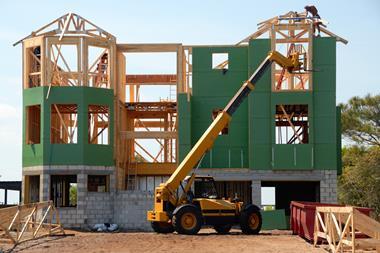The €4bn pension fund of retailer Ahold has divested its 2.5% stake in commodities and begun selling its private equity and non-listed property holdings in a bid to lower its risk profile.
In its annual report, it said it wanted to replace the divested assets with mortgages.
The allocation changes come in the wake of an asset-liability management study and the adoption of a dynamic asset allocation, where the ratio between fixed income and equities depends on the scheme’s funding.
When the pension fund’s coverage ratio falls below 130%, for example, it seeks to reduce risk by scaling back equities.
Its funding at the end of March was just over 108%, following a drop of 2.6 percentage points over the previous quarter.
The pension fund’s new strategic asset allocation is 27% equity, 68% fixed income and 5% listed real estate.
The Ahold scheme reported a 1.3% loss for 2015, with its 5.7% return on investments failing to offset the 7% combined loss on its interest and currency hedges.
Because the currency hedge had such a marked impact on overall returns, the pension fund said it raised its cover of the British pound, the Japanese yen and the Swiss franc to 100%, while introducing a dynamic hedge for the US dollar.
The scheme said it could gradually increase its dynamic interest hedge – 60% at the end of last year – to the strategic level of 75% if interest rates rise.
Equity and fixed income returned 6.9% and 4%, respectively, over 2015, while non-listed real estate and private equity returned 15.3% and 19.3%, respectively.
Commodities returned 9.8% before they were sold in April, while emerging-market debt produced a 6.4% loss.
Last year, Ahold offloaded its stake in the commodities investment fund of Bank of America Merrill Lynch and terminated its credit mandate with asset manager Wellington.
The Ahold scheme, which employs AXA IM as fiduciary manager, has invested 79% of its asset through mandates.
In other news, the €1.6bn pension fund of Dutch regulator De Nederlandsche Bank (DNB) has raised its risk profile, increasing its strategic property allocation from 5% to 8% and expanding its equity portfolio by 1 percentage point to 26%.
The pension fund, which kept its interest hedge at 75%, said the adjustment would offer the best opportunity to increase returns with a limited increase in risk.
The DNB scheme raised its risk profile last year as well in an effort to increase its surplus return from 1.2% to 1.6%.
At the time, it grew its property allocation from 3% to 5% and increased its equity holdings from 17.5% to 25%, while reducing its interest cover from 93% to 75%.














.jpg)






No comments yet